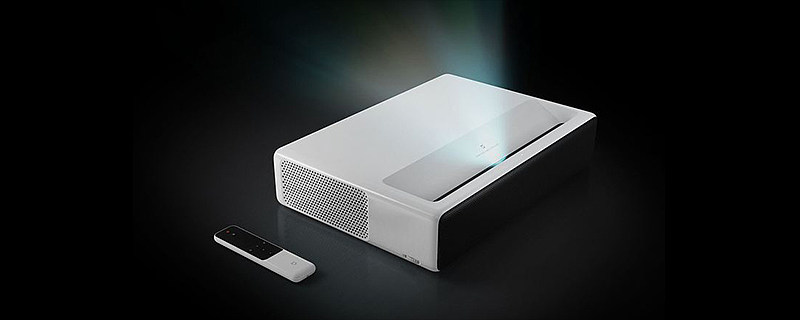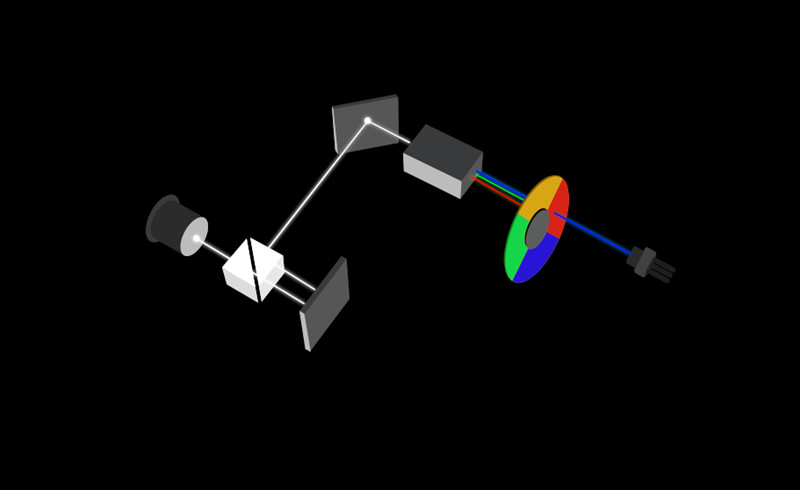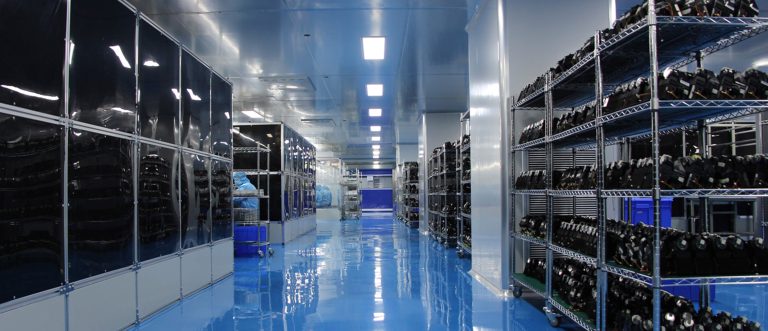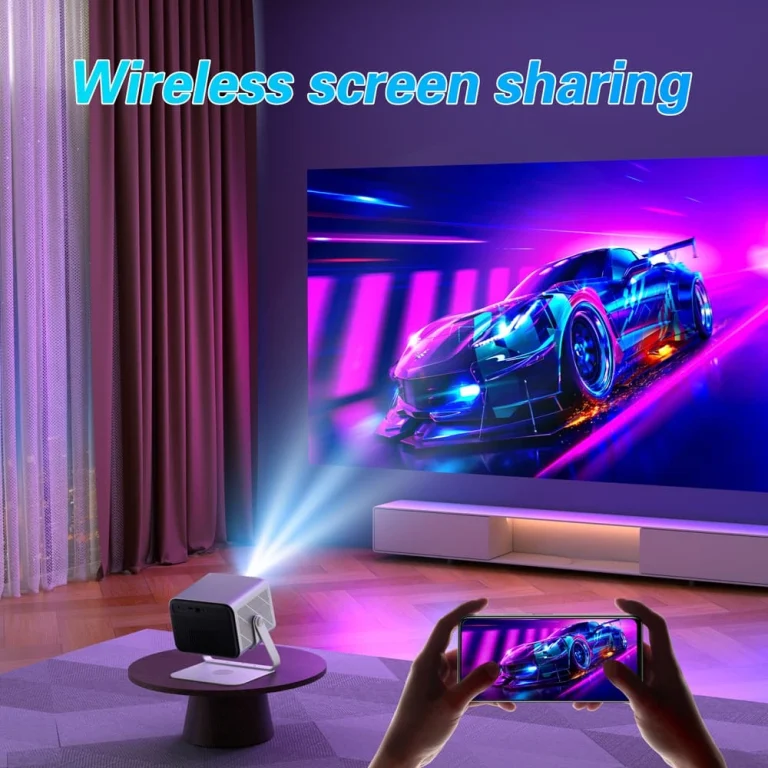
How a UST Projector Solves Your Space Problem
Understanding Throw Ratio: What it Means for Your Room
- Traditional (Long Throw) Projectors (Ratio > 1.0:1): To get a 100-inch screen, you need to place the projector 10 feet or more away. This is why you see them on ceiling mounts or shelves at the back of a dedicated theater room—simply not practical for most living rooms.
- Ultra Short Throw (UST) Projectors (Ratio < 0.4:1): This is the revolution. With a throw ratio this small, you can place the projector on a standard TV cabinet, just inches from your wall, and get a massive 100 or 120-inch image.
Three Ways UST Technology Immediately Improves Your Experience
- You Reclaim Your Living Room: Gone are the days of ceiling mounts, long HDMI cables, or a projector sitting in the middle of your room. A UST projector from our collection integrates into your space with the elegance of a soundbar, preserving your home’s aesthetic.
- You Can Say Goodbye to Movie-Night Shadows: We’ve all been there. Someone gets up for a snack and their shadow dances across the screen. Because a UST projector sits directly under the screen and projects light up at a steep angle, you and your guests can move freely without ever blocking the image.
- You Experience “Placement,” Not “Installation”: Setting up a traditional projector can be a frustrating exercise in measurements, drilling, and calibration. Setting up a UST projector is as simple as positioning it on your media console and plugging it in. It turns a complex installation project into a simple setup process.
What is a Triple-Laser Light Source and Why Does It Matter?
A Journey Through Light: How We Got Here
- The Old Guard (UHP Lamps): For a long time, projectors used high-pressure lamps. They were bright, but their lifespan was short (2,000-4,000 hours), meaning you’d be buying expensive replacement bulbs. Worse, they started to dim and lose color vibrancy from the moment you started using them.
- The LED Step-Up: LED light sources solved the lifespan issue, lasting 20,000 hours or more. But for years, they lacked the raw power (measured in ANSI lumens) to create a truly bright, punchy image on a large screen, especially if you had any lights on in the room.
- The Clever Compromise (Single-Laser Phosphor): The first generation of laser projectors used a single powerful blue laser that shone on a spinning yellow phosphor wheel to create other colors. This gave you the long lifespan of an LED with the brightness of a lamp. However, you were still viewing colors that were converted from another source, which fundamentally limited their purity and range.
The Triple-Laser Breakthrough: The Purest Light Imaginable

3 Ways Triple-Laser Technology Creates a Superior Image
- Achieving 100%+ BT.2020 Color Gamut
- Unlocking True Blacks with High Contrast
- Investing in a Decade of Consistent Brightness
The Reality Check: 4 Crucial Factors to Consider Before You Buy
- The True Cost of Admission: It’s a System, Not Just a Box
- Why Your Wall Isn’t Good Enough: The ALR Screen Necessity
- A Frank Discussion About “Laser Speckle”

- The Sensitivity Factor: A Heads-Up for Active Homes
Making Your Decision: Is This “Future TV” Right for You?
- You crave a truly cinematic screen size (100″+) but don’t have a dedicated room or the desire for a complex installation.
- You are a videophile who values color accuracy and picture quality above all else and wants to see 4K HDR content exactly as the director intended.
- You have the budget for a complete premium system, including both the projector and the essential ALR screen.
- You want a spectacular viewing experience for movies, sports, and gaming in a multi-use living space, not just a darkened home theater.
FAQs
A UST projector is a device designed to project a very large image from just a few inches away from the screen or wall. With a throw ratio of less than 0.4:1, it can create a 100-inch or larger display while sitting almost flush against the wall.
Yes, triple laser projectors deliver exceptional brightness, color accuracy, and a wide BT.2020 color gamut. They are especially valuable for home theater enthusiasts seeking lifelike visuals. However, they are more expensive compared to LED or lamp projectors.
A Laser TV is essentially an ultra short throw triple laser projector paired with a dedicated screen. Unlike regular flat-panel TVs, it can produce images up to 120 inches or more, while maintaining sharpness and cinematic immersion.
Yes, but they perform best with an Ambient Light Rejection (ALR) screen. This type of screen improves contrast and prevents washed-out images under daylight or room lighting.
They excel in different areas. An OLED TV can offer superior absolute black levels in a completely dark room. However, a UST Laser TV is unmatched in its ability to provide a massive, 100-inch-plus cinematic experience with incredible brightness and color that holds up in rooms with ambient light. For sheer scale and impact, the Laser TV is in a class of its own.




